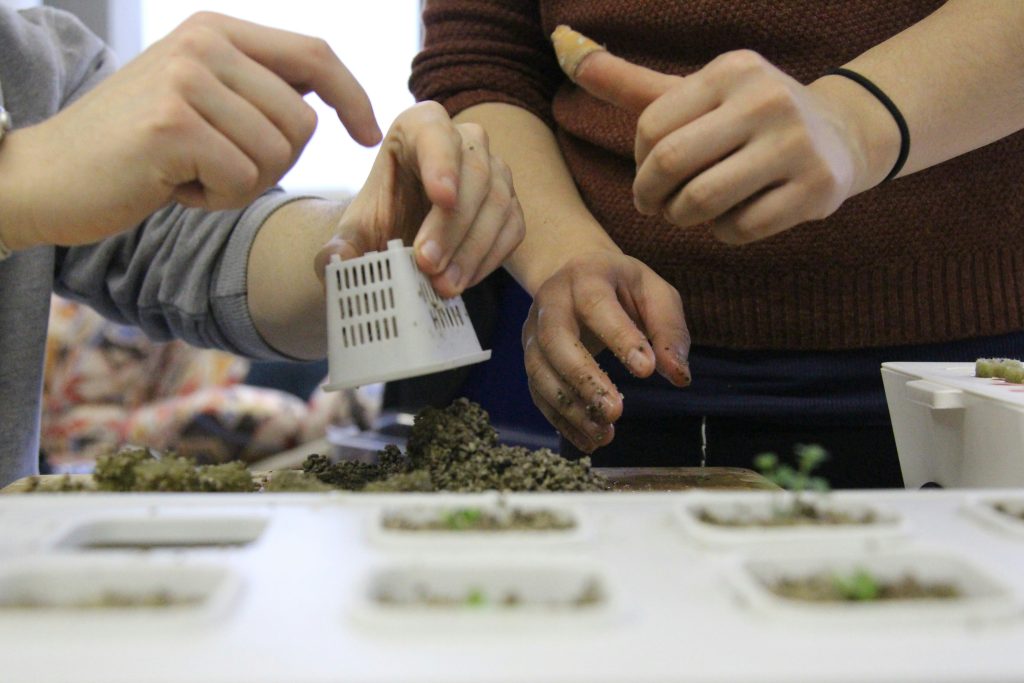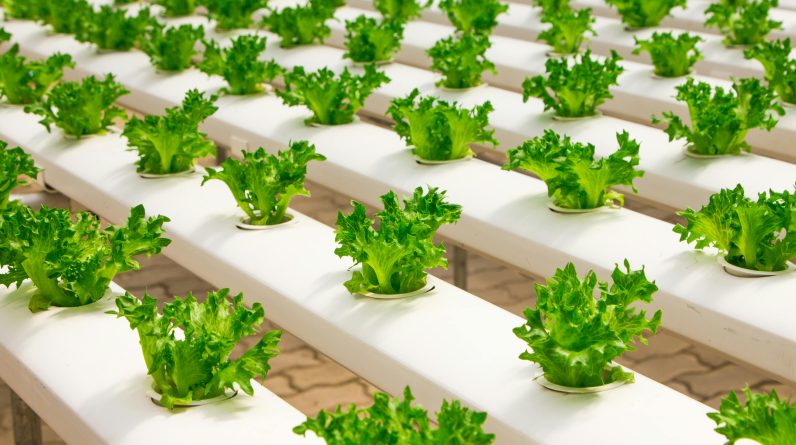
Understanding Hydroponic Farming
You might have heard about hydroponic farming, but do you know what it really is and why it’s gaining popularity as a sustainable farming method? Let’s explore the world of hydroponics and why it’s a smart choice for sustainability.
What is Hydroponic Farming?
Hydroponic farming is a method of growing plants without soil. Instead of relying on soil for nutrients, plants are grown in a nutrient-rich solution directly delivered to their roots. This system allows for better control over the plant’s growth and enables faster and healthier development.
Why is Hydroponic Farming Sustainable?
Hydroponic farming is considered sustainable for several reasons. This method uses up to 90% less water compared to traditional soil gardening, making it more water-efficient. Additionally, hydroponic systems enable year-round cultivation, independent of external weather conditions. This consistent production helps reduce the carbon footprint associated with long-distance transportation of fresh produce.
Benefits of Hydroponic Farming
Let’s take a deeper look into the various benefits that hydroponic farming offers and why it’s gaining traction among modern farmers and gardeners.
Increased Plant Growth
One significant advantage of hydroponic farming is the accelerated growth of plants. Without the need to search for nutrients in soil, plants can allocate more energy towards growth. This results in faster maturation and higher yields compared to traditional gardening methods.
Water Conservation
Hydroponic systems are incredibly water-efficient, using significantly less water than traditional soil-based farming. By delivering water directly to the roots of plants, there is minimal water wastage through evaporation or runoff. This conservation of water resources is crucial for sustainable agriculture, especially in regions prone to water scarcity.
Soil-Borne Disease Prevention
Traditional soil-based gardening is susceptible to soil-borne diseases that can impact plant health and productivity. By eliminating soil from the equation, hydroponic farming significantly reduces the risk of disease transmission. This leads to healthier plants and a lower dependency on chemical pesticides and fertilizers, contributing to eco-friendly agriculture practices.
Space Efficiency
Hydroponic systems are highly versatile and space-efficient, making them ideal for urban environments and areas with limited land availability. Vertical hydroponic setups, in particular, maximize the use of vertical space, allowing for more crops to be grown in a smaller footprint. This space-saving feature is particularly advantageous for urban farming initiatives aiming to increase local food production and reduce reliance on imports.

Types of Hydroponic Systems
There are various types of hydroponic systems, each with its own unique advantages and suitability for different plant varieties and growing environments. Let’s explore the most common types of hydroponic systems utilized in modern agriculture.
Deep Water Culture (DWC)
In a Deep Water Culture system, plants are suspended in a nutrient solution with their roots submerged in the water. Air stones provide oxygen to the roots, promoting healthy growth. DWC systems are straightforward to set up and maintain, making them an excellent choice for beginners in hydroponic farming.
Nutrient Film Technique (NFT)
The Nutrient Film Technique involves a thin film of nutrient solution flowing over the plant roots, providing them with oxygen and nutrients. This continuous flow system is ideal for fast-growing crops like lettuce and herbs. NFT systems are efficient in water usage and nutrient distribution, resulting in optimal plant growth.
Ebb and Flow System
Also known as flood and drain systems, Ebb and Flow setups periodically flood the plant roots with nutrient solution before draining the excess. This cycle ensures the roots receive ample oxygen and prevents waterlogging. Ebb and Flow systems are versatile and adaptable to various plant types, making them a popular choice for hydroponic enthusiasts.
Aeroponics
Aeroponic systems involve suspending plant roots in the air and misting them with a nutrient solution at regular intervals. This method exposes roots to ample oxygen and promotes rapid nutrient uptake, leading to accelerated plant growth. Aeroponic systems are highly efficient in resource usage and are often used in research and commercial hydroponic farming.

Nutrient Management in Hydroponic Farming
Proper nutrient management is essential in hydroponic farming to ensure plants receive the necessary minerals for healthy growth and development. Let’s delve into the key aspects of nutrient management in hydroponic systems to optimize plant health.
Essential Nutrients for Plants
Plants require essential nutrients to thrive, including macronutrients like nitrogen, phosphorus, and potassium, and micronutrients like iron, manganese, and zinc. These nutrients play crucial roles in plant metabolism, photosynthesis, and overall growth. In hydroponic systems, these nutrients are supplied through nutrient solutions tailored to the specific needs of each plant variety.
pH Monitoring and Adjustment
Maintaining the correct pH level in the nutrient solution is vital for nutrient uptake by plant roots. Most plants thrive in slightly acidic conditions, with a pH range of 5.5 to 6.5. Regular monitoring of pH levels and adjusting them using pH-up or pH-down solutions is necessary to ensure optimal nutrient absorption and prevent nutrient deficiencies or toxicities.
Electrical Conductivity (EC) Measurement
Electrical conductivity (EC) measures the concentration of dissolved salts in the nutrient solution, indicating its strength and nutrient content. Monitoring EC levels helps ensure that plants receive an appropriate balance of nutrients for healthy growth. Adjusting nutrient solutions based on EC readings is essential to prevent nutrient imbalances and maintain optimal plant health.
Nutrient Solution Preparation
Preparing a balanced nutrient solution is critical in hydroponic farming to provide plants with all essential nutrients in the right proportions. Commercial nutrient mixes are available for different growth stages of plants, or growers can customize their solutions based on specific crop requirements. Regular testing and adjustment of the nutrient solution help maintain plant health and optimize growth.

Environmental Sustainability of Hydroponic Farming
Hydroponic farming offers several environmental benefits that contribute to sustainable agriculture practices and reduce the ecological impact of food production. Let’s explore how hydroponics promotes environmental sustainability and conservation of natural resources.
Reduced Water Usage
One of the most significant environmental benefits of hydroponic farming is its efficient water usage. By delivering water directly to plant roots and recirculating nutrient solutions, hydroponic systems use up to 90% less water than traditional agriculture. This water conservation is crucial in regions facing water scarcity and helps mitigate the environmental impact of excessive water consumption in farming.
Elimination of Chemical Runoff
Conventional agriculture practices often involve the use of chemical fertilizers and pesticides that can leach into soil and water sources, contaminating the environment. In hydroponic farming, nutrient solutions are contained within the system, reducing the risk of chemical runoff and water pollution. This environmentally friendly approach minimizes the negative impact of agriculture on ecosystems and aquatic habitats.
Energy Efficiency
Hydroponic systems can be designed to optimize energy usage through efficient lighting, water pumps, and climate control mechanisms. By incorporating renewable energy sources like solar power or LED lighting, hydroponic farms can further reduce their carbon footprint and reliance on non-renewable energy. This energy-efficient approach contributes to overall environmental sustainability and reduces greenhouse gas emissions associated with food production.
Land Preservation and Urban Farming
The space-efficient nature of hydroponic systems allows for cultivation in urban environments, repurposing underutilized spaces for food production. Urban hydroponic farms help preserve valuable agricultural land from urban sprawl and promote localized food supply chains. By reducing the distance food travels from farm to table, hydroponic farming minimizes transportation-related carbon emissions and supports community resilience.

The Future of Hydroponic Farming
As consumers increasingly demand sustainable and locally sourced food options, the future of hydroponic farming looks promising. With advancements in technology, innovation in farming practices, and a growing awareness of environmental conservation, hydroponics is poised to play a significant role in the future of agriculture.
Technological Innovations and Automation
The integration of technology and automation in hydroponic farming is revolutionizing the way crops are grown and harvested. From sensor-driven monitoring systems to automated nutrient dosing and climate control, technological innovations optimize resource efficiency and crop yields. This automation reduces labor costs, increases productivity, and ensures consistent crop quality, making hydroponic farming more economically viable and sustainable.
Vertical Farming and Controlled Environments
Vertical farming utilizing hydroponic systems allows for efficient use of vertical space and high-density crop cultivation. By stacking growing trays or utilizing vertical towers, farmers can maximize production capacity while minimizing land footprint. Controlled environment agriculture (CEA) practices, including temperature and humidity control, artificial lighting, and CO2 enrichment, further enhance plant growth and production efficiency in hydroponic systems.
Community Engagement and Education
Hydroponic farming offers opportunities for community engagement and education on sustainable agriculture practices. Urban hydroponic farms can serve as educational centers for local schools, organizations, and aspiring farmers, promoting awareness of food production and environmental stewardship. By fostering a connection between consumers and the sources of their food, hydroponic farming encourages a more sustainable approach to food consumption and production.
Collaborative Research and Development
Research institutions, agricultural organizations, and private enterprises are collaborating to advance hydroponic farming techniques and develop new technologies for improving crop yield and resource efficiency. Through partnerships and knowledge sharing, the hydroponic industry is constantly evolving to address global food security challenges and promote sustainable farming practices. This collaborative approach ensures the continued growth and innovation of hydroponic farming for a more sustainable future.
In conclusion, hydroponic farming is a sustainable and efficient agricultural method that offers numerous benefits for plant growth, resource conservation, and environmental sustainability. By embracing hydroponics and investing in innovative farming practices, we can contribute to a more resilient and environmentally friendly food system for future generations. Whether you’re a seasoned farmer or an aspiring gardener, exploring hydroponic farming can open new possibilities for sustainable agriculture and fresh produce cultivation. Embrace the future of farming with hydroponics and make a positive impact on our planet’s health and well-being.
Related Content
- The Ultimate Guide to deep water culture hydroponics: 10 Effective Tips for 2025
- Sustainable Farming for the Modern World
- A Smarter Approach to Urban Farming
- The Ultimate Guide to ebb and flow hydroponics: 7 Effective Strategies for 2025
- The Ultimate Guide to 10 Effective Hydroponic Vegetables at Home in 2025










